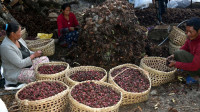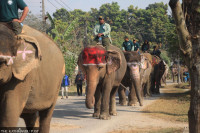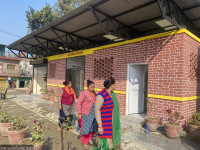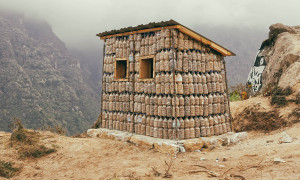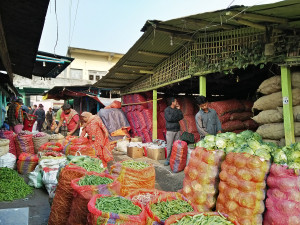Money
Nepal's trade with China going through rough patch
Lack of visas for Nepali traders, restrictions on container trucks and late delivery of consignments are among the problems hindering trade, insiders say.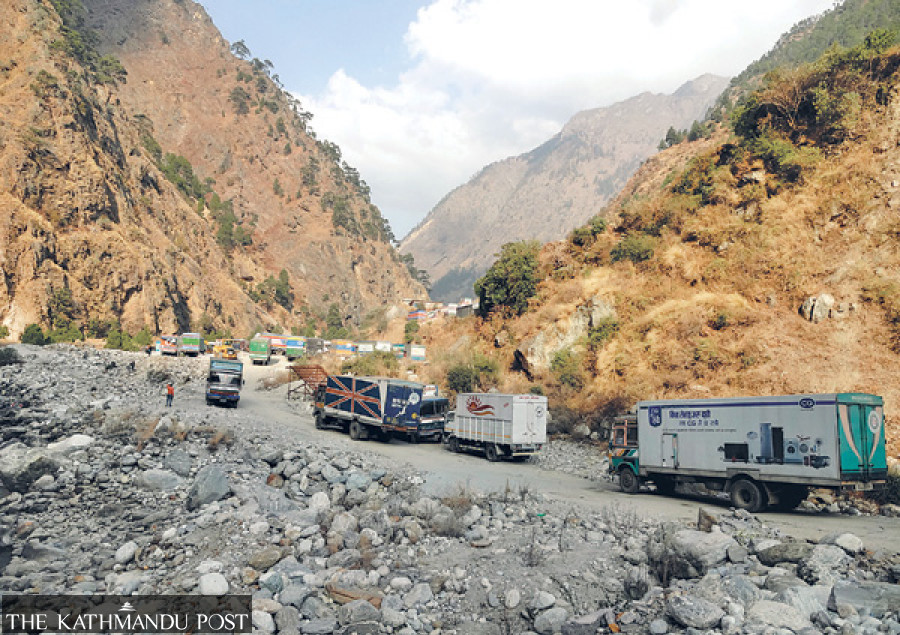
Krishana Prasain
From January 2020 when the coronavirus pandemic was beginning to spread, there was a near halt in the arrival of cargo containers from China to Nepal. Trade still has not resumed fully, with the northern neighbour placing strict restrictions at the border. Even then, imports from China swelled in the last fiscal year ended mid-July 2021.
According to the Department of Customs, imports from China in fiscal 2020-21 rose 28.58 percent year-on-year to Rs233.92 billion.
Before Covid in fiscal 2018-19, imports amounted to Rs205.51 billion. In 2017-18, imports were valued at Rs159.98 billion, up from Rs129.87 billion in fiscal 2016-17.
Nepal suffers a huge deficit in its trade with China. If Nepal imported Rs233.92 billion worth of goods from the northern neighbour in 2020-21, its exports across the Himalaya were valued at a mere Rs1 billion.
This translates into a trade deficit of Rs232.90 billion, which accounted for 14 percent of Nepal’s total trade deficit in fiscal 2020-21.
Business with China started booming after 2015 when the Nepal government removed export duty.
In fiscal 2015-16 when Nepal was hit by a devastating earthquake, imports from China stood at Rs116.11 billion, up from Rs99.28 billion in 2014-15.
In the last seven years, imports from China have increased three-fold.
Sunil Kumar Dhanuka, president of the Nepal Foreign Trade Association, says that freight costs have increased exorbitantly after the pandemic. It currently costs $6,000-$6,500 to ship a 20-foot container from China to Nepal, and $10,500-$11,500 to ship a 40-foot container.
Before the pandemic, the charges were $1,800-$2,000 for a 20-foot container and $2,800 for a 40-foot container.
A hike in freight costs means an increase in the price of goods by more than 20-25 percent for traders which obviously is passed on to the consumer. Shipping costs are a key component of food and non-food prices in countries like Nepal.
China is Nepal's second largest trading partner after India.
Nepal’s major imports from China in the last fiscal year consisted of electric goods (worth Rs16.70 billion), machinery and parts (Rs21.17 billion), readymade garments (Rs17.96 billion) and telecommunication equipment and parts (Rs31.55 billion), according to Nepal Rastra Bank.
In the last fiscal year, the country exported handicrafts, mostly metal and wool, amounting to Rs141.9 million, other handicraft goods worth Rs165.9 million and woollen carpets valued at Rs222.8 million to China.
The pandemic has pushed up freight costs globally. As a result, goods have become more expensive causing a significant rise in inflation for countries like Nepal.
The United Nations Conference on Trade and Development (UNCTAD) has predicted that higher shipping costs will make goods costlier over the next year.
According to an UNCTAD report published on November 18, the global surge in container shipping rates could raise consumer prices by 2.2 percent in the least developed countries over the next year, based on an 8.7 percent increase in import prices.
Container freight rates skyrocketed amid a surge in demand for freight transport, shortage of shipping containers, and limited capacity and congestion at ports, the report said, adding that the impact was generally greater in smaller economies.
Ashok Kumar Shrestha, president of the Nepal Trans Himalayan Border Commerce Association, said that transport charges from Kerung to the Nepal border, a 30-kilometre distance, have increased six-fold to around Rs600,000 per container from Rs100,000 before the pandemic.
More than 100 cargo containers used to come through Tatopani daily before the earthquake.
Nowadays, according to Shrestha, around eight containers leave Kerung daily for Nepal.
Most of the goods imported from China are meant for festival sales during Dashain and Tihar. But for two years, the ordered consignments have been arriving so late that they missed the festival shopping season.
Shrestha said that China is not issuing visas to Nepali traders, as a result they are being cheated on quality as they have to place orders virtually.
A lack of infrastructure on the Nepali side is also one of the reasons for the fewer number of containers coming this way.
“The customs yard is very small,” said Shrestha. “From Liping to Barhabise, the road is not so good, and this problem occurs every year during the rainy season.”
Many importers are rerouting their inbound cargo through southern border points to avoid losses and uncertainties.
It normally takes two months for goods ordered from China to arrive in Nepal by sea freight, and two weeks by container truck overland across the northern border.
The traders have informed the Ministry of Industry, Commerce and Supplies, Ministry of Finance and Ministry of Foreign Affairs, Embassy of China and the private sector apex body, the Federation of Nepalese Chambers of Commerce and Industry (FNCCI), about their problems.
The government has been negotiating with Chinese authorities to allow more containers to pass into Nepal, but the trade problem remains the same.
Customs data shows exports to China declined to Rs1 billion in the last fiscal year from Rs1.19 billion in 2019-20. That is almost half of the figure for the fiscal year 2018-19 when shipments totalled Rs2.10 billion.
Concerns have also grown if there is an undeclared blockade on the Nepal-China border, as Nepali traders have been unable to import goods, resulting in losses to the tune of millions of rupees.
“China failed to exhibit good neighbourly behaviour in terms of trade,” said Posh Raj Pandey, a trade economist. Government officials say that trade between Nepal and China is continuing following certain health protocols. “In this context, China failed to keep good relations with Nepal.”
According to Pandey, although Nepali traders suffered losses due to the restrictions, China could face long-term harm in terms of trade relations.
Nepal looked towards its northern border to diversify trade after India’s border blockade in 2015.
A slew of agreements were signed, including one on trade and transit, which allowed Nepal to access seven Chinese sea and land ports for Nepal’s third country trade. The third-country trade via China also raised hopes that Nepal would finally come out of its complete dependence on India.
But with China not allowing cargo trucks to enter Nepal smoothly, concerns have risen if Nepal indeed can conduct third-country trade via its northern neighbour.
“Traders who ordered goods in advance from China have lost billions,” said Pandey.
There are two key trade routes—Rasuwagadhi-Kerung and Tatopani-Zhangmu (also known as Khasa)—between Nepal and China.
Kerung is situated at a distance of 190 km from Kathmandu while the distance between Tatopani and Kathmandu is 115 km.
The Tatopani-Khasa border point reopened on May 29, 2019, after remaining closed for four years following the 2015 earthquakes. The border point was a major overland route for trade with the northern neighbour.
The Rasuwagadhi-Kerung customs point, which was elevated to an international checkpoint between Nepal and China allowing people from third countries to cross the border, reopened in July 2020.
Nepal’s foreign trade has been growing for the last five years, except for a decline in the fiscal year 2019-20. Nepal’s total trade decreased by 14.59 percent to Rs1,294.50 billion in 2019-20 from Rs1,515.64 billion in the fiscal year 2018-19 due to Covid-19 related trade restriction and a global supply chain breakdown.
However, in 2020-21, Nepal’s foreign trade hit a new record increasing by 29.9 percent to Rs1,680.96 billion. The total trade deficit increased 27.3 percent to Rs1,398.71 billion in 2020-21.
India accounted for 64.1 percent of Nepal’s total foreign trade in fiscal 2020-21 ended mid-July 2021. China is Nepal's second largest trading partner accounting for 14 percent of Nepal’s total trade. However, China is not the second largest trading partner for Nepal's exports.
“China’s indifference towards Nepal gives a message that we cannot trust China. Nepal needs to diversify its market,” said Pandey.
(This report is produced under a fellowship programme of Center for Media Research-Nepal)




 6.12°C Kathmandu
6.12°C Kathmandu
